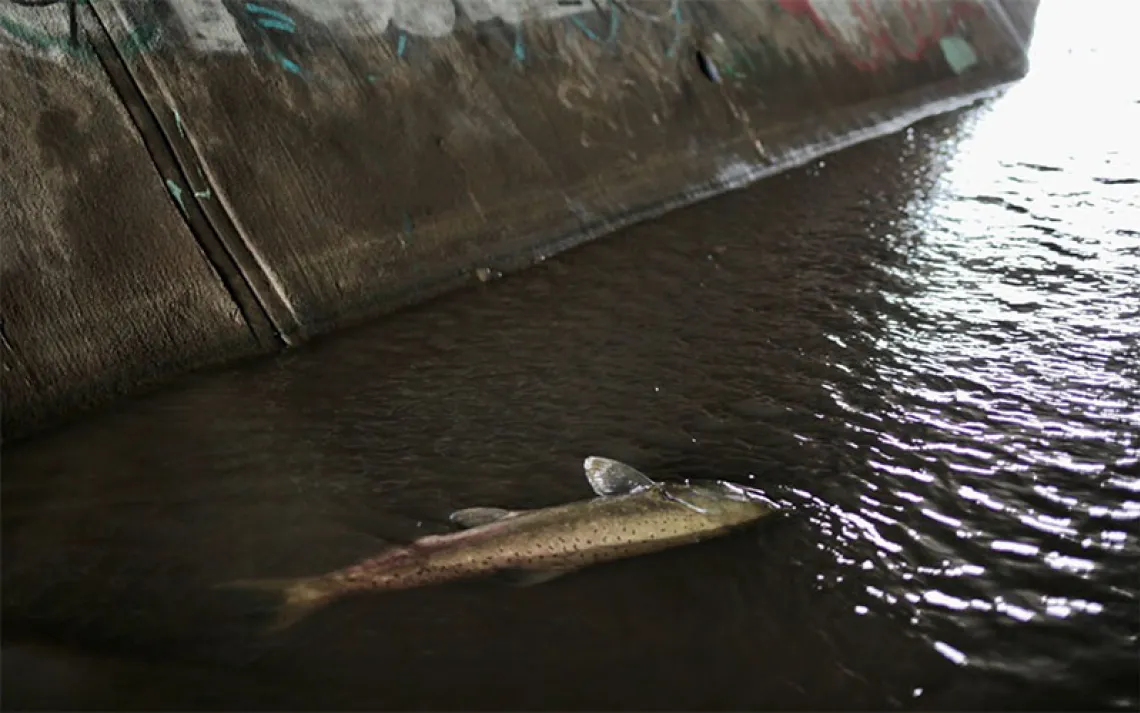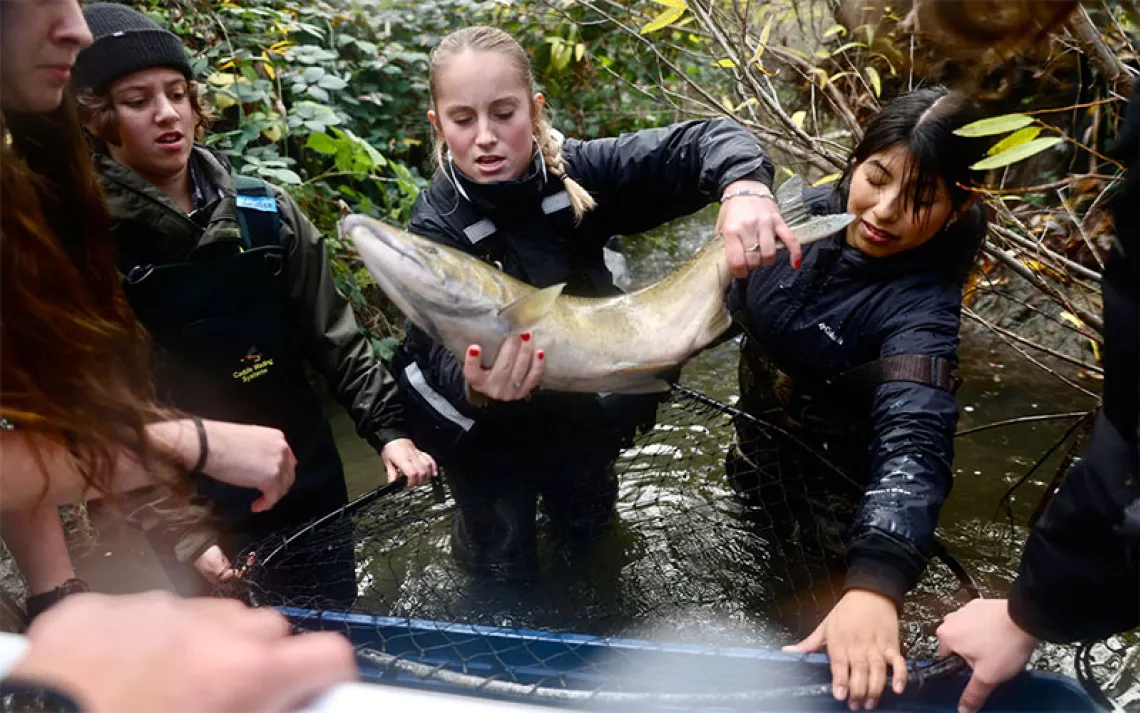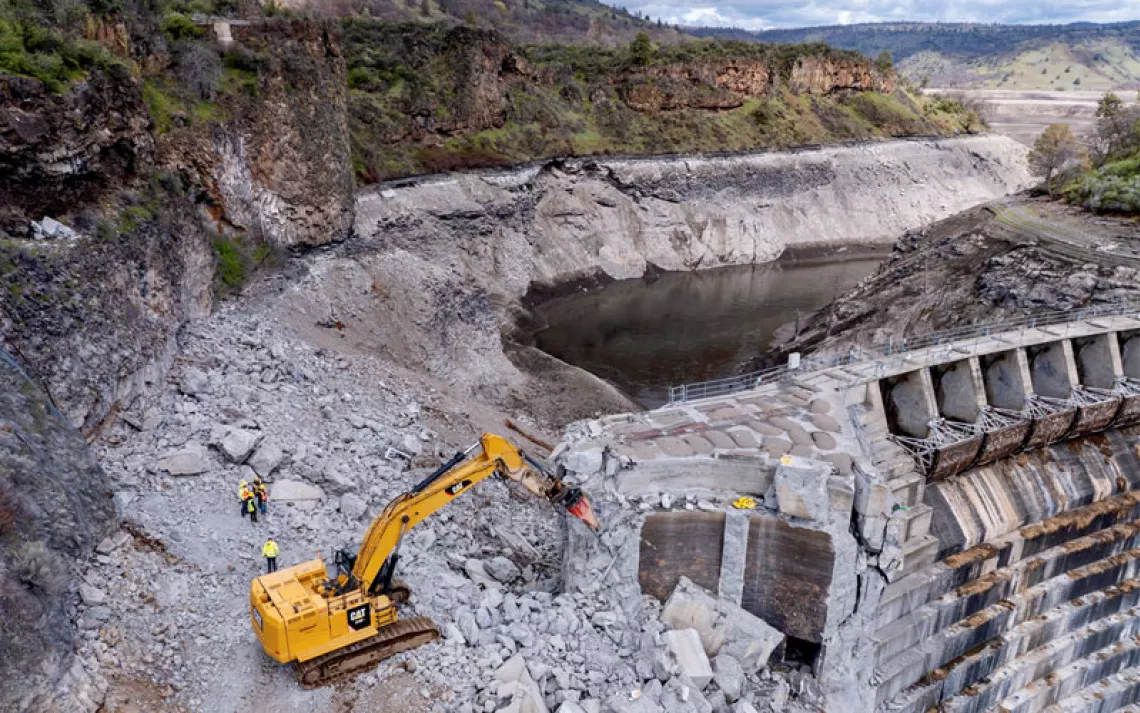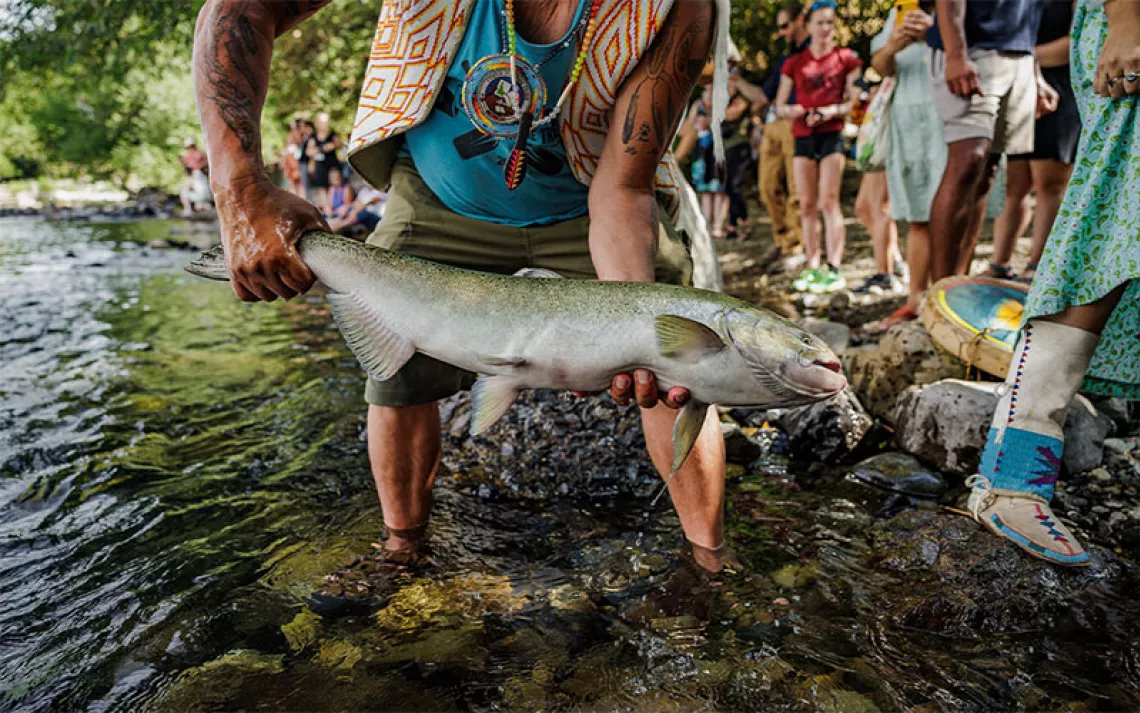Chinook Salmon Make an Unlikely Journey to Oakland’s Lake Merritt
The sighting could be a sign of improved ecosystem health
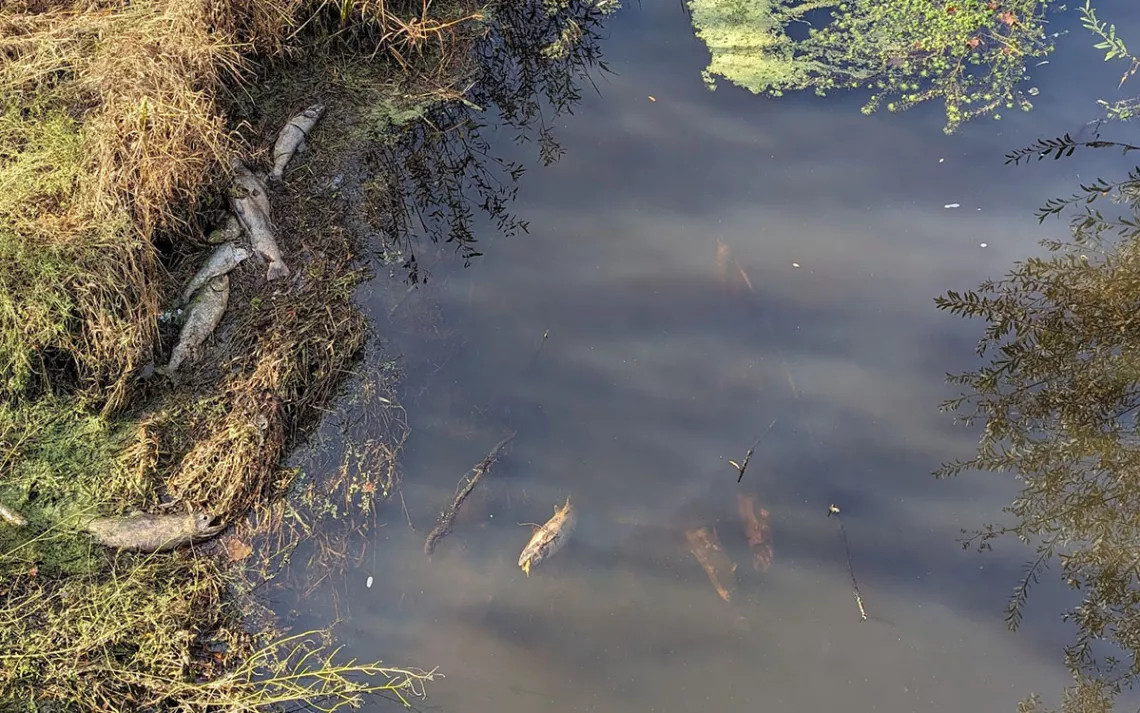
Photo courtesy of Neil Hancock
Long before the creation of the city of Oakland, salmon were spawning. Their journey would likely have taken them from the freshwater creeks they were born in out to the Pacific Ocean to mature and back again to reproduce, struggling up a wide channel into what was formerly a large saltwater lagoon. Each would have tried to swim through the lagoon and into the creeks above to spawn as their bodies slowly decayed. But since development cut off access to that lagoon’s creeks over a century ago, narrowed the entrance to the lagoon itself, and converted it into what is now known as Lake Merritt, the salmon have stopped coming back.
In his 10-year tenure as executive director of the nonprofit Lake Merritt Institute, James Robinson had only seen a salmon in the lake once. So when he first heard reports of a Chinook spotted in the waters in November, he was doubtful at first.
“Many times we have people say they witness salmon in the lake,” he said, “and it's actually a striped bass or some other fish.” However, the following day members of the Lake Merritt Institute found bodies of several Chinook salmon washed up on the lake’s shore.
The discovery was bittersweet to Robinson. The salmons’ death in the brackish lake suggests that they didn’t get to spawn, as only salmon who make it to freshwater can reproduce. However, death is a natural part of the reproductive cycle of Chinook salmon: all adults who return to freshwater die soon after. To Robinson, seeing their remains in the lake was a sign of what could be.
To many Oakland locals, Lake Merritt, although iconic, doesn’t exactly seem like a haven for wildlife. “I grew up in Oakland, and I used to walk around the lake as a child,” Robinson says. “I remember my mom telling me ‘Oh, it’s a landfill.’”
However, there is more life in this lake than it might seem. Lake Merritt was the first protected wildlife refuge to have ever been established in the United States. The lake sports several manmade islands that host dozens of species of migratory birds. There are a surprising number of critters under the surface as well. The lake’s brackish waters are home to a cadre of aquatic organisms, including bat rays, anchovies, sea squirts, bass, and even animals like nudibranchs, river otters, and leopard sharks.
However, salmon have been notably absent from the ecosystem. According to Darren Howe, the San Francisco Bay branch supervisor at the National Marine Fisheries Service, the salmon that turned up in Lake Merritt this year are probably strays, meaning they ended up here by accident. He argues that these unlikely crusaders made it to the lake as a result of unusually high salmon return rates this year. Following a rainstorm in early November, Chinook have been spotted in record numbers all across the Bay Area. In Campbell, California, crowds gathered to watch the fish journey up the Los Gatos Creek, which many locals said was their first time seeing them. According to Howe, there was a huge return in the Napa River as well, exciting residents who had never seen this species before. “What we're seeing in Lake Merritt is that it's a year of big returns, and that’s when you start to see them in places where you might not normally see them,” he says.
These unusually high numbers might be in part thanks to restoration efforts that are underway in many Bay Area watersheds. In Los Gatos Creek, the South Bay Clean Creeks Coalition has removed huge amounts of trash and redirected water flow to allow for young fish to survive. Removal of a weir in Alameda Creek, which flows through Fremont, and restoration to Wildcat Creek, which flows through Berkeley, has allowed for greater numbers of salmon and other fish to reach further inland, Howe says.
Chinook salmon numbers in the Bay have also been bolstered by hatcheries in the Central Valley, which sometimes drop salmon off in the San Francisco Bay to increase their survival rates, says Sean Cochran, an environmental scientist at the California Department of Fish and Wildlife. In recent years, he says that the Pacific Fishery Management Council has closed commercial salmon fisheries due to low numbers, which may have given the fish the leeway they needed to make a triumphant return. “We hope that these fish make a return to their former levels of abundance,” Cochran says.
Lake Merritt, too, has seen significant improvements that allowed for salmon to make their way back to the former lagoon. According to Robinson, the City of Oakland has removed pipes in the channel between Lake Merritt and the Oakland estuary, creating the space the salmon needed to swim up the channel, and has also left the tide gates at the end of the lake open more often, which allows the salmon to swim in and increases the oxygen inside the lake. The Lake Merritt Institute has also improved the lake’s water quality through trash cleanups and advocated for oxygen fans to be put in, which keep deadly algal blooms from decimating wildlife. “We want to make sure that we have the lake in the best possible condition when salmon and other creatures arrive,” Robinson says.
Unfortunately, although a pair of salmon did make it to Glen Echo Creek above Lake Merritt back in 2001, no pair has ever been seen successfully spawning. The creeks these fish used to spawn in still exist. However, to allow for drainage and urban development, the city moved them underground, where they now exist in the form of storm drains until they exit the downtown and become proper creeks again. The salmon need the natural chaos in a stream—the eddies to effortlessly stay in one place—and storm drains are often designed for fast water flow, which makes it very difficult for them to travel to the spawning area above. If they were to make it there, they would find that its conditions are no longer ideal: The creek is too warm and lacking in cover for young fish to survive.
For salmon spawning in Oakland to become a reality, Robinson says that many of these storm drains would have to be modified, and restoration undertaken to make the creeks more habitable for young salmon. “We hope that one day, this can be an area where we can have the Chinook salmon spawning and coming back every year,” he says.
Since the first discovery of the dead salmon, members of the Lake Merritt Institute have also seen two live Chinook salmon making their way through the lake. Richard Bailey, founder and former board member of the Lake Merritt Institute, sent out a call to volunteers last week to check whether these individuals made it to the open area of Glen Echo Creek. If they have, it will be the first time they have done so in over 20 years.
Howe urges those who were inspired by the salmon sightings to get involved with their local watershed organizations and make a difference for urban ecosystems. As for whether the salmon could return to Lake Merritt, he isn’t entirely pessimistic. “With a lot of good work, and there is good work happening, it’s possible. Anything’s possible.”
 The Magazine of The Sierra Club
The Magazine of The Sierra Club
